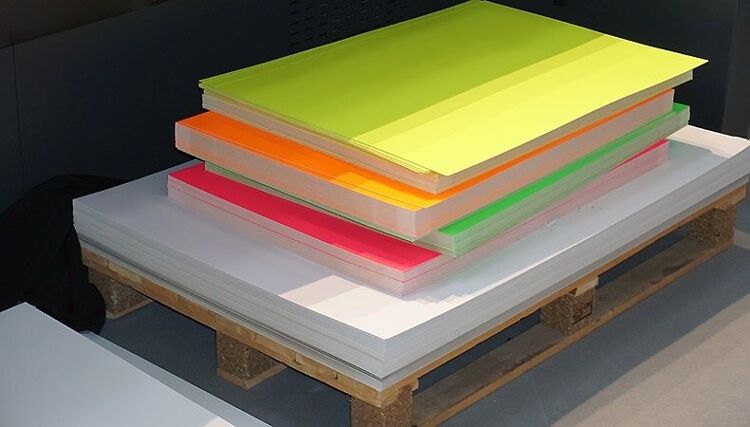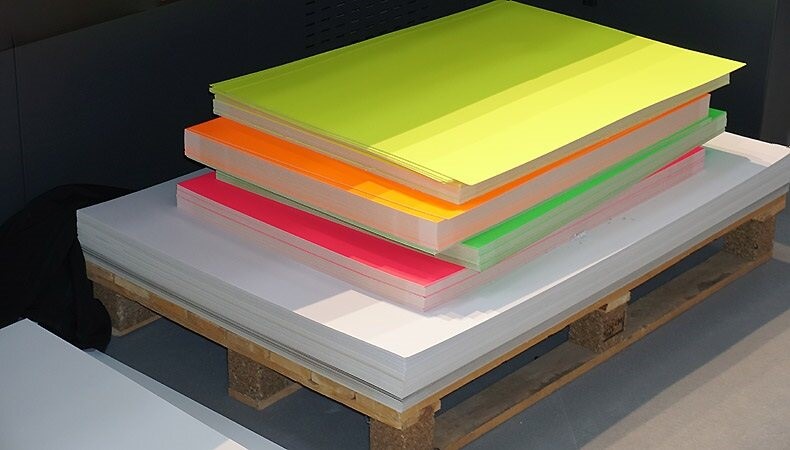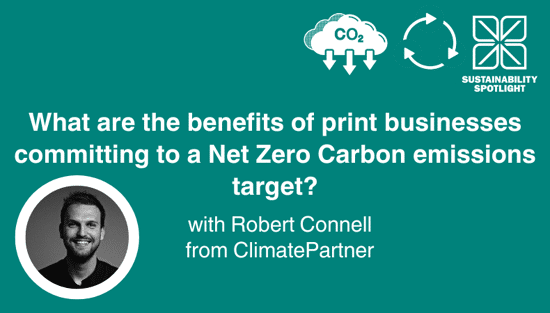The challenge in large format printing: cheap vs sustainable products

Sonja Angerer shares how print buyers want to buy cheap but sustainable products without the additional cost. Is this really true and what does this mean for the future of large format printing?
Many printers review their business during Christmas and New Year. As they look towards a new year they looks towards future trends and prepare their business and employees for any challenges that they may face.
Sustainable printing applications continue to remain popular. However, due to the current, challenging, economic climate in most European countries it is expected that cost of print products will become even more important. This is why several printers are torn between favouring sustainable substrates or cheaper products.
In this article, we will explore various perspectives regarding Large Format Printing and will discuss the challenge to create products that are more cost-effective but are also sustainable.
What are “green substrates”?
With the ongoing climate crisis, the industry is looking for solutions that are less damaging to the environment but still meet the needs of the customer. In recent years, PVC-based media has been heavily used in advertising and has been rightly criticized. The material remains indispensable for certain applications. However, for many standard applications, manufacturers have already brought to market print media made from alternative, sustainable materials.
Looking at these alternative media we can focus on the different properties. This is because there are no universally accepted definitions of "sustainability" or "green" substrates. Substrates that are advertised as environmentally friendly can have the following properties:
-
PVC-free (e.g. Heytex Heysign Ecotex)
-
water-based glue (Mehler Texnologies Airtex Free)
-
made entirely or partly from recycled material (Berger Textiles be.tex Samba Green)
-
easily recyclable (Sihl GreenGrafx Photo Paper)
-
locally produced (substrates from Georg+Otto Friedrich)
-
light and easy to transport (Pongs Printex Softimage Lightbox)
-
made from renewable raw materials (Katz Display Boards).
The different approaches to sustainability often make it difficult to clearly distinguish between real environmental protection or greenwashing. It is important to be aware that the properties of a print are often significantly changed during finishing. For example, the print for the wall of an exhibition stand is laminated and glued onto an aluminium composite panel, this notably increases the ecological footprint of the overall product.
 CAPTION: Soft signage can often replace advertising printed on PVC. Photo: S. Angerer
CAPTION: Soft signage can often replace advertising printed on PVC. Photo: S. Angerer
Customers want cheap and sustainable products
How can you determine the ecological footprint of a custom-made print? The lack of generally accepted standards that determine exactly what can be considered environmentally friendly is an issue in digital printing or sign-making. However, it is one important reason why customers are likely to choose the cheaper solution, this makes it more challenging for printers to convince print buyers to buy alternative substrates.
In most cases, sustainable substrates are more expensive than conventional products, due to the fact production and processing are more complex. In addition, there are differences in durability. Robust and weather-resistant PVC is not so easy to replace. For example, if a banner on alternative material needs to be re-printed numerous times over the intended display period due to wear and tear, the project costs for the customer will substantially increase.
However, only a small fraction of large format applications is intended as permanent outdoor advertising.
 CAPTION: Printers will need to educate their customers even better. Photo: S. Angerer
CAPTION: Printers will need to educate their customers even better. Photo: S. Angerer
Consulting as a service
For printers, this means that in the future the focus will have to be on consulting. In many cases, print buyers will choose a substrate they already are familiar with. Even if there are printing substrates and finishing methods with less of an ecological footprint readily available.
 CAPTION: Sustainable substrates are popular, but will customers pay a premium?
CAPTION: Sustainable substrates are popular, but will customers pay a premium?
Photo: S. Angerer
In addition, it is advisable to include more alternative print media in your product offering. After all, if a low-cost, but environmentally harmful printing substrate is the standard option for any application, printers should not be too surprised if their customers choose it.
But regardless of the customer's preferences, printers can take action in their operations to make the production of print products less harmful to the environment. This includes:
-
energy-efficient printing machinery
-
reliable production workflows
-
efficient use of substrates
-
avoiding composite material where possible
A positive factor is that all these measures also help to reduce production costs.
Climate protection and low prices are not mutually exclusive
When exploring the different perspectives in large format printing, it is evident that the question of whether green substrates or extremely low prices will dominate in the future. Looking towards the future, most suppliers in the industry will have to offer environmentally friendly products, simply because customers demand them.
However, it is also not to be expected that an increased cost can be charged for environmentally friendly print products. Therefore, production methods must become even more efficient. This reduces the consumption of resources and helps the environment. This is a win win for the environment and in the industry!
Discover the latest innovations in large format printing and sustainability at FESPA Global Print Expo 2024, Europe’s leading print and signage exhibition. Taking place from 19th – 22nd March 2024 at RAI Amsterdam, Netherlands. Register here to visit and use promo code FESJ406 for a 30 euros discount.
Topics
Recent news

What are the benefits of print businesses committing to a Net Zero Carbon emissions target?
We speak to Robert Connell, Senior Commercial Sustainability Manager at ClimatePartner who who offer solutions along the net zero cycle to support business’s effort in corporate climate action. In this discussion we discuss the importance and the process and benefits of businesses committing to a Net Zero Carbon emissions target.

6 Sustainable Printing Practices Changing the Game in Textile and Apparel Decoration
The textile industry is shifting towards sustainability. Innovations like waterless and digital printing, eco-friendly inks, and recycled materials are reducing waste. AI and automation optimise production, while circular models promote reuse. Consumer demand for transparency drives this change, making sustainable practices essential for future-focused brands.

Sustainability in Production Print: Advancing Practices in Wide Format, Textiles, and Software
As sustainability continues to take centerstage across industries, the production print sector is making massive strides in integrating eco-conscious practices. From wide format to textile applications, with the growing reliance on advanced production software, the space is evolving to meet environmental goals as well as consumer demand for sustainable products.

Why must the print industry recognise software and material innovation
Laurel Brunner argues that the printing industry must recognise the value of both software and material innovation, and be willing to pay for it. Software, though intangible, drives efficiency and reduces carbon footprints. While materials science currently dominates, R&D costs are inherent in all advancements. Paying a premium ensures continued progress, benefiting the industry's evolution and sustainability.